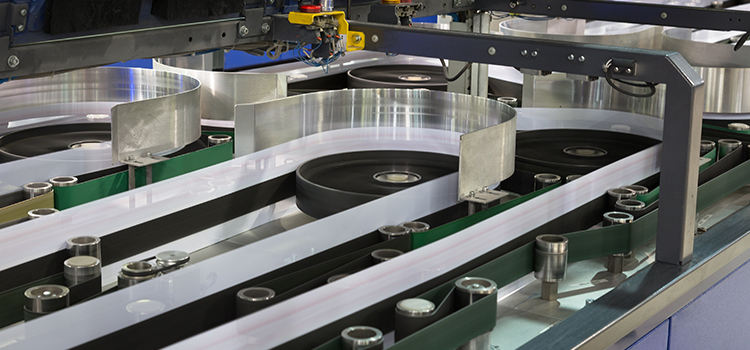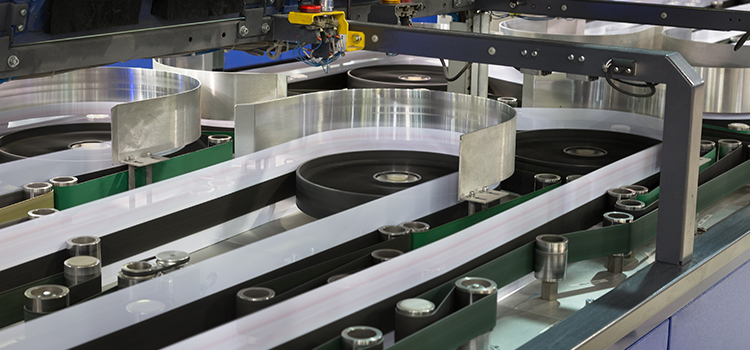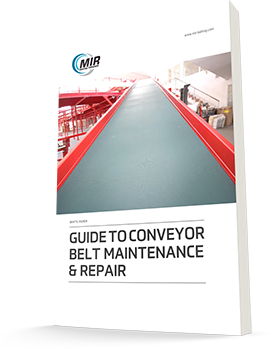Whether you’re a maintenance or engineering manager at a snack food plant or oversee conveyor belt repairs at a distribution center, you know even the best-designed conveyor belts may need repairs to get to a replacement window and avoid potential downtime. It’s the nature of the rigorous work conveyor systems do. But when a conveyor belt starts to show signs of wear or has a full-blown breakdown, you need to know which repair methods are available.
Understanding how to effectively repair belts is an essential skill for any maintenance or engineering manager, ensuring your plant can return to full operating capacity. Here we’ll describe the types of conveyor belt damage and common repair methods, then explain the important distinction between food and non-food belt repair.

Types of conveyor belt damage
Though any damage to a belt is undesirable, certain types of damage are more conducive to towards immediate failure than others. Strings and frays can be trimmed and the belt can continue to run, though a repair or replacement may be warranted soon. Rips, tears and fingers or metal lacing popping loose on a splice can mean potential catastrophic failure is imminent.
Another way to evaluate conveyor belt damage is with a rule of thumb from the NIBA(National Industrial Belting Association): If no more than 25% of the belt width is involved in the damage, a repair is practical. When more than 25% of the width of the belt is damaged, a full resplice or replacement is preferable.
Repair methods
These are the main methods to consider when repairing a damaged belt.
Vulcanization
Vulcanization — the use of heat, time and pressure when splicing a belt — is the most reliable conveyor belt repair method, as it creates the highest recovery potential of the belts original strength. The vulcanization technique used depends on the type of belt construction splice instructions recommended.
There are two basic types of belt construction compounds that dictate the splice method recommended. Of course, there are hybrids with their own splicing instructions. The key is to not vary from the recommended splicing “recipe” or you jeopardize the integrity of the best splice possible.
Thermoset Compounds:
1. Thermoset compounds are materials that do not revert to a liquid state when splicing.
2. They are spliced under low heat for more lengthy periods of time. (250 degrees +)
3. They also are cooled under a lengthy time frame.
** The specifics on each thermoset compound will vary and an MIR expert can provide the correct instructions for each specification. **
4. Although most applications using thermoset belt constructions are not typically food grade, there are still some available in the market. Such as nitrile, butyl, etc.
Thermoplastic Compounds:
1. Thermoplastic compounds are materials that revert to a liquid state when vulcanizing.
2. This produces a strong strength recovery and a sanitary homogenous result.
3. These belts are spliced under high temperatures. ((325degrees F+)
4. These belts are cooled quickly utilizing air as well as water cooling technology.
** The specifics on each thermoplastic compound will vary and an MIR expert can provide the correct instructions for each specification. **
5. Although many applications using thermoplastic belt constructions are typically food grade, there is still a large number of specifications available in the market that are not. PVC, PU, Polyolefin are a sample of the more common specifications.
Vulcanization is the best and most dependable repair method for its speed and reliable recovery to the the belts original strength. When a thermoset rubber covered belt is damaged, all methods of repair should be considered as their repair is more difficult that thermoplastic. However, it should be noted that when there is cover damage on a food-grade belt (a.k.a. thermoplastic covered belts), the damage is almost always non-repairable for sanitation concerns; in those scenarios, replacement is the best option.
Metal fasteners
A second option for conveyor belt repair may be metal fasteners. They are quick and easy to apply. On the downside, metal fasteners offer considerably less strength than vulcanization, and a number of pf potential safety concerns including food contamination and employee safety if a lace breaks and is protruding.
Metal fasteners are a good back-up repair option for non-food-grade belts and are used to provide a temporary solution until the belt can be vulcanized or replaced. Given their risks for safety and belt reliability, metal fasteners are not meant to act as a permanent solution.
Cold curing (cold vulcanization)
The final and least desirable repair method is cold curing (also known as cold bonding). The two-part cement is made up of a base compound and a curing agent. Under time and pressure, the curing agent solidifies and bonds with the surface.
Cold curing is used when space constraints in the plant don’t allow vulcanization equipment to access the belt. This method is the least desirable, however, because it is recommended you wait 24 to 36 hours for the curing agent to set. The cement creates a stiff, rigid splice that poses issues at transfer points. This repair method should only be utilized by maintenance managers if no other repair option is viable and immediate replacement isn’t possible.
To summarize, vulcanization is the first choice for maintenance managers for repairing belts, with metal fasteners providing a quick-fix option until there is a window of downtime for vulcanization or replacement. Cold curing or cold vulcanization is a last resort repair method.
A note on repair vs. replacement
Vulcanization, metal fasteners and cold curing are best used as a temporary solution until you can find a window of time to replace the belt. This reduces the possibility of catastrophic belt failure and increases your plant reliability potential.
As noted in the vulcanization section, there is an important distinction between repairing food-grade and non-food-grade belts. Belts conveying non-food products can be repaired with vulcanization, metal fasteners or cold curing without concerns for sanitation. But with food-grade belts, the liability of a cover repair is extremely high. The belt must be extremely clean (free of oils, contaminants and foreign materials) to resplice, and your exposure to inspection services and product recalls outweighs the benefits. With food-grade belts, replacement is the safest option.
Conveyor belt maintenance is a complex but essential part of any highly efficient plant. For more industry-approved advice from conveyor belting experts, download our Guide to Conveyor Belt Maintenance and Repair or consult with your MIR expert representative. We offer insights on conveyor belt repair, advice on troubleshooting tracking issues and a printable checklist for an improved maintenance program — freeing up your time to focus on improving plant productivity and increasing reliability.
 View Locations
View Locations 24/7 Service: 877-MIR-BELT (877-647-2358)
24/7 Service: 877-MIR-BELT (877-647-2358)






